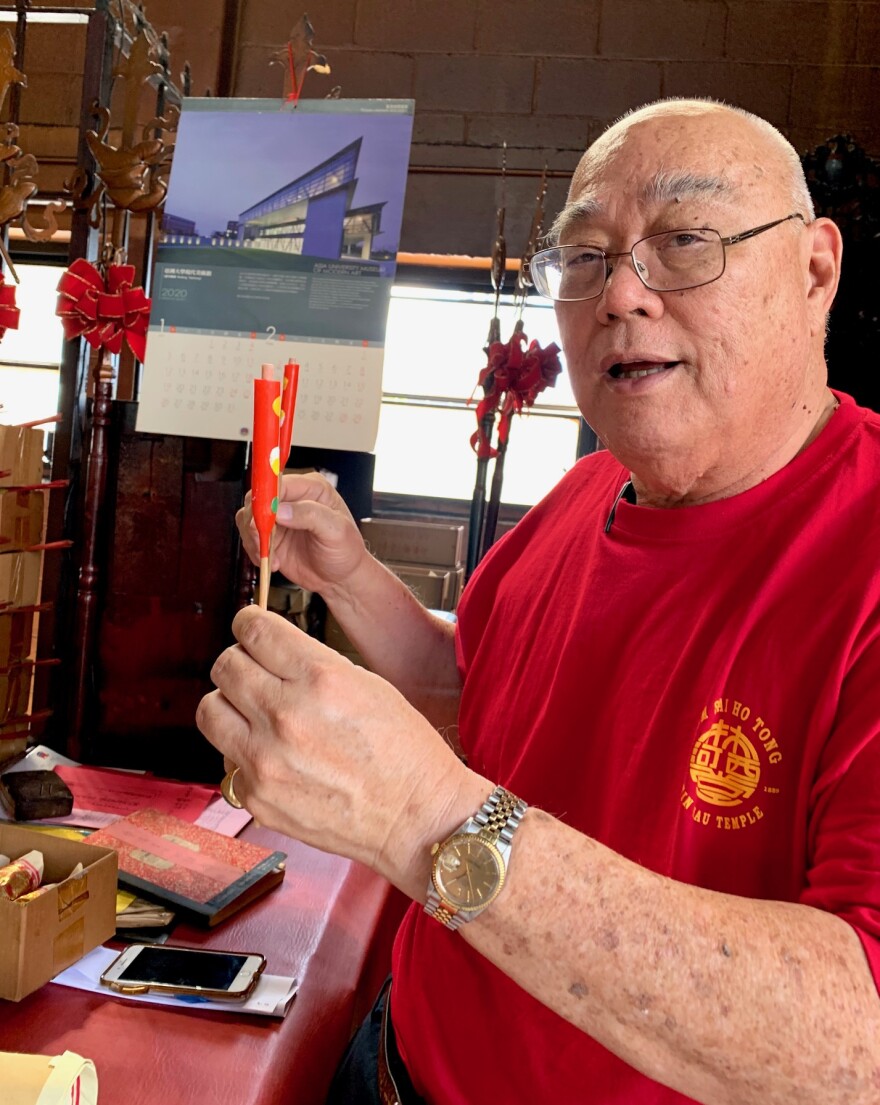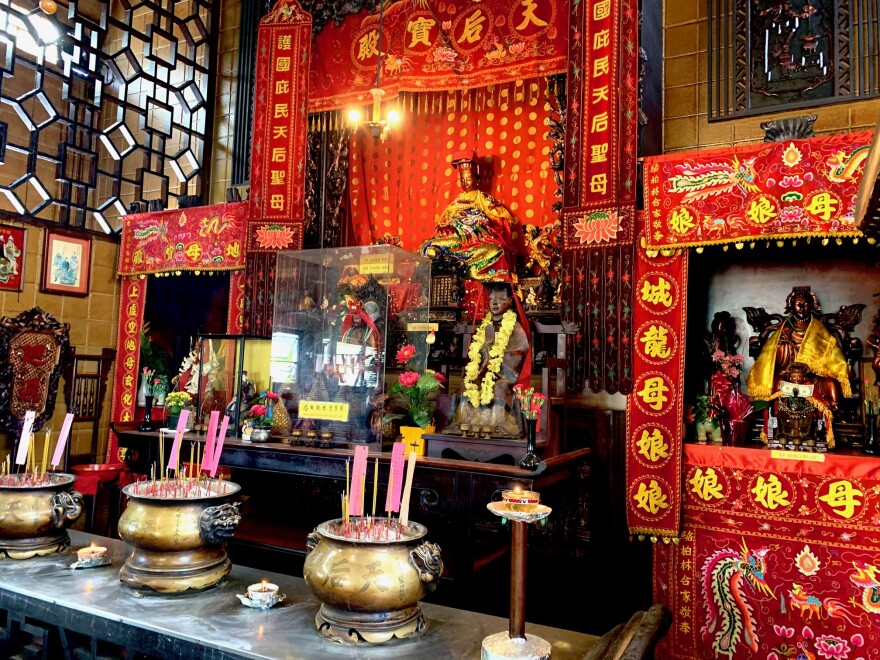The Lunar New Year begins this Saturday. It’s the year of the metal rat and celebrations hit a peak Friday night through Saturday. Lion dances, firecrackers, even the foods of the season, are slipping from sight in Honolulu, but there's a spot at the Vineyard Boulevard edge of Chinatown that will be hopping Friday night.

Howard Lum, is vice president this year and frequent past president of Lum Sai Ho Tong, the society of Lum families.
“When I say Lums, I mean the Lums, Lim, Lam and Lins, they’re all Lums,” he said.
Which begins to explain why there are Lum fraternal organizations worldwide. Lum Sai Ho Tong, here on the mauka edge of Chinatown, was started by former plantation workers in 1889 as a place to rest and to find resources and compadres.
“The Lum family actually started 3,111 years ago. This is the father over here, Pi Gan. Actually he was a Wong.”
Chinese know this stuff. Or used to. They know that actually the first Lum, Pi Gan, was a Wong, the last prime minister of the Shang dynasty, and not a favorite of the Emperor. Things happened and King Woo, the first emperor of the next (Chou) dynasty restored Pi Gan’s family, giving them the honorific name of Lum, which means forest. That's where the rescued family’s heir was born.
“Ancestral things and stuff, for some people, it’s really important and for some people it’s not important at all,” says Lum.
“I’m modern Chinese, I don’t know all this. I’m learning while I’m here. That’s why I want to come down and check it out,” says Debbie Lum, who fell in with Lum Sai Ho Tong about a year ago.
“This is Chinese New Year, but I didn’t realize the whole celebration was multiple weeks. Doing all this, it’s like a big party,” she says.
Lum Sai Ho Tong is also home to Tin Hau Temple. Tin Hau, also a Lum, was known for selfless works during the Sung dynasty. A couple thousand local believers, many Vietnamese, will climb the stairs to offer thanks and prayers to Tin Hau, starting Friday night.
I finally got to ask my big question: Do you make gau here?
“Everybody buys now. When my grandmother passed away, the family gau no more! My grandmother used to make eight, one for each of her children. She had to steam, it. We didn’t pass it on. So we don’t know how to do it. I have a recipe for microwave gau.”
If you’ve ever had homemade gau, wrapped in stitched t? leaves, smoky and steamed for hours, commercially available reproductions are hard to enjoy. But we’ll forget.
“When the Chinese came here, a lot of them wanted to be American, so they dropped a lot of their customs and everything real fast,” says Howard Lum.

“We’re one of the few families that know our original ancestor," Lum continues. "Wong Bi Gan, would be like Abraham to us, he’s the first of the line. So in a way, we have the blessings and protections of our ancestors and the goddesses, too. And in this case, a lot of them are our ancestors.”
It must be quite a feeling -- like having your own super hero support group. Lum societies are thriving world wide. Tin Hau temples are also popular in Asia.
Local Vietnamese worshippers of Tin Hau have breathed new life into Lum Sai Ho Tong.
“So now we are kind of rejuvenating because we were really down in the early 2000s.”
Lum Sai Ho Tong is in a sweet location. The city plans a senior housing development on River Street just mauka of the Lum property. Diagonally across the river is Izumo Taishakyo, the Shinto temple, and down the river, at Nimitz, there’s a rail stop coming. Lum Sai Ho Tong also stewards the crosswalk across Vineyard to the Kwan Yin Chinese Buddhist Temple.
“It could develop into a nice cultural neighborhood," says Lum. "So if possible, I’d like to keep working toward that goal. I don’t’ know if I’ll ever make it, but there were several challenges along the way that everybody said was impossible, and somehow we were able to complete all of them! So we’ll see what happens.”
Lum Sai Ho Tong is down to maybe three dozen active members, although over 300 showed for the 130th anniversary last year.
“Big challenge again, so what?" says Lum. "Each time it seems like it’s tougher, but we’re getting there, yup.”
You’re always welcome to stop by to light incense or get your fortune read. A good sign for the future: Howard Lum’s son is the current president.




